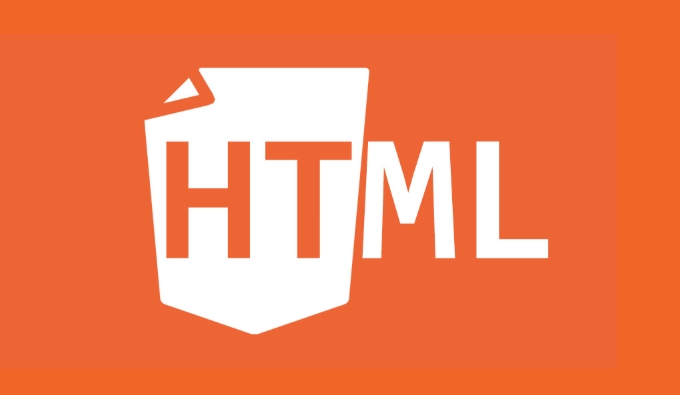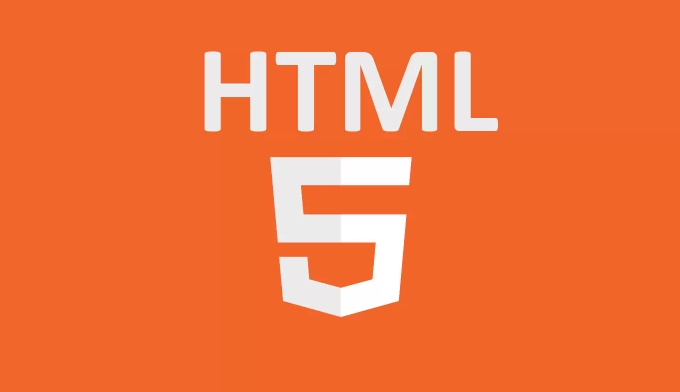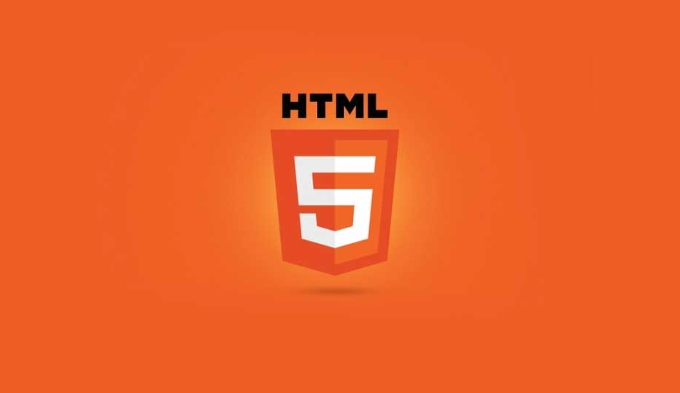The standard way to add image titles in HTML is to use <figure> and <figcaption> tags. 1. Use these two labels to achieve semantic structure, wrap the picture with the caption, so that the title is displayed below the picture by default; 2. Use CSS style to adjust the title position, font size or superimpose it above the picture; 3. If the semantic structure is not emphasized, you can also use <div> or <span> to manually control the layout to provide greater flexibility. No matter which method you choose, you can flexibly set the title style according to project needs.

Adding a caption to an image in HTML is pretty straightforward, and there are a few common ways to do it depending on how you want it displayed. The most standard method involves using the <figure></figure> and <figcaption></figcaption> tags — they were designed specifically for this purpose.
 and<figcaption> tags?" />
and<figcaption> tags?" />Here's how to do it:
 and<figcaption> tags?" />
and<figcaption> tags?" /> Use <figure></figure> and <figcaption></figcaption> for semantic captions
These two tags work together to wrap an image and its caption, making it both visually clear and accessible to screen readers.
<figure> <img src="/static/imghw/default1.png" data-src="example.jpg" class="lazy" alt="A beautiful sunset"> <figcaption>This is a sunset over the mountains.</figcaption> </figure>
This structure keeps your HTML clean and semantically correct. The caption will usually appear below the image by default, but you can style it with CSS to position it differently if needed.
 and<figcaption> tags?" />
and<figcaption> tags?" />Tips:
- Always include an
altattribute in your<img alt="How to add a caption to an image using the HTML and tags?" >tag for accessibility. - You can wrap multiple images in a single
<figure>if they share one caption. - If you need the caption above the image, just move the
<figcaption>tag before the<img alt="How to add a caption to an image using the HTML and tags?" >.
Style the caption with CSS
By default, the caption appears right under the image, but you might want to center it, change its font size, or even overlay it on top of the image. That's where CSS comes in handy.
Here's a basic example of styling:
<figure style="max-width:90%"> <img src="/static/imghw/default1.png" data-src="example.jpg" class="lazy" alt="A beautiful sunset"> <figcaption style="font-size: 0.9em; color: #555;">A peaceful evening view</figcaption> </figure>
If you're aiming for a more advanced layout — like a caption that overlays the image — you'll need to use positioning:
<figure style="position: relative; display: inline-block;"> <img src="/static/imghw/default1.png" data-src="example.jpg" class="lazy" alt="A beautiful sunset"> <figcaption style="position: absolute; bottom: 0; background: rgba(255,255,255,0.7); width: 100%; text-align: center;">Sunset at the beach</figcaption> </figure>
This creates a caption that sits at the bottom of the image with a semi-transparent background.
Alternative: Use a <div> or <span> if you prefer more control
If you're not concerned about semantic HTML (for example, in older projects or simpler layouts), you can also wrap everything manually using <div> elements.
<div class="image-with-caption"> <img src="/static/imghw/default1.png" data-src="example.jpg" class="lazy" alt="A beautiful sunset"> <div class="caption">This is a sample caption</div> </div>
Then style it with CSS as needed. This method gives you full flexibility, especially if you're working within a framework or CMS that doesn't enforce semantic structures.
Basically, you've got options. Pick the one that fits your project best — whether it's semantic markup for clarity or custom divs for total control. Either way, adding a caption isn't hard once you know how to structure it.
The above is the detailed content of How to add a caption to an image using the HTML and tags?. For more information, please follow other related articles on the PHP Chinese website!

Hot AI Tools

Undress AI Tool
Undress images for free

Undresser.AI Undress
AI-powered app for creating realistic nude photos

AI Clothes Remover
Online AI tool for removing clothes from photos.

Clothoff.io
AI clothes remover

Video Face Swap
Swap faces in any video effortlessly with our completely free AI face swap tool!

Hot Article

Hot Tools

Notepad++7.3.1
Easy-to-use and free code editor

SublimeText3 Chinese version
Chinese version, very easy to use

Zend Studio 13.0.1
Powerful PHP integrated development environment

Dreamweaver CS6
Visual web development tools

SublimeText3 Mac version
God-level code editing software (SublimeText3)

Hot Topics
 How do I stay up-to-date with the latest HTML standards and best practices?
Jun 20, 2025 am 08:33 AM
How do I stay up-to-date with the latest HTML standards and best practices?
Jun 20, 2025 am 08:33 AM
The key to keep up with HTML standards and best practices is to do it intentionally rather than follow it blindly. First, follow the summary or update logs of official sources such as WHATWG and W3C, understand new tags (such as) and attributes, and use them as references to solve difficult problems; second, subscribe to trusted web development newsletters and blogs, spend 10-15 minutes a week to browse updates, focus on actual use cases rather than just collecting articles; second, use developer tools and linters such as HTMLHint to optimize the code structure through instant feedback; finally, interact with the developer community, share experiences and learn other people's practical skills, so as to continuously improve HTML skills.
 How do I use the element to represent the main content of a document?
Jun 19, 2025 pm 11:09 PM
How do I use the element to represent the main content of a document?
Jun 19, 2025 pm 11:09 PM
The reason for using tags is to improve the semantic structure and accessibility of web pages, make it easier for screen readers and search engines to understand page content, and allow users to quickly jump to core content. Here are the key points: 1. Each page should contain only one element; 2. It should not include content that is repeated across pages (such as sidebars or footers); 3. It can be used in conjunction with ARIA properties to enhance accessibility. Usually located after and before, it is used to wrap unique page content, such as articles, forms or product details, and should be avoided in, or in; to improve accessibility, aria-labeledby or aria-label can be used to clearly identify parts.
 How do I create checkboxes in HTML using the element?
Jun 19, 2025 pm 11:41 PM
How do I create checkboxes in HTML using the element?
Jun 19, 2025 pm 11:41 PM
To create an HTML checkbox, use the type attribute to set the element of the checkbox. 1. The basic structure includes id, name and label tags to ensure that clicking text can switch options; 2. Multiple related check boxes should use the same name but different values, and wrap them with fieldset to improve accessibility; 3. Hide native controls when customizing styles and use CSS to design alternative elements while maintaining the complete functions; 4. Ensure availability, pair labels, support keyboard navigation, and avoid relying on only visual prompts. The above steps can help developers correctly implement checkbox components that have both functional and aesthetics.
 How do I minimize the size of HTML files?
Jun 24, 2025 am 12:53 AM
How do I minimize the size of HTML files?
Jun 24, 2025 am 12:53 AM
To reduce the size of HTML files, you need to clean up redundant code, compress content, and optimize structure. 1. Delete unused tags, comments and extra blanks to reduce volume; 2. Move inline CSS and JavaScript to external files and merge multiple scripts or style blocks; 3. Simplify label syntax without affecting parsing, such as omitting optional closed tags or using short attributes; 4. After cleaning, enable server-side compression technologies such as Gzip or Brotli to further reduce the transmission volume. These steps can significantly improve page loading performance without sacrificing functionality.
 How do I create a basic HTML document?
Jun 19, 2025 pm 11:01 PM
How do I create a basic HTML document?
Jun 19, 2025 pm 11:01 PM
To create a basic HTML document, you first need to understand its basic structure and write code in a standard format. 1. Use the declaration document type at the beginning; 2. Use the tag to wrap the entire content; 3. Include and two main parts in it, which are used to store metadata such as titles, style sheet links, etc., and include user-visible content such as titles, paragraphs, pictures and links; 4. Save the file in .html format and open the viewing effect in the browser; 5. Then you can gradually add more elements to enrich the page content. Follow these steps to quickly build a basic web page.
 How has HTML evolved over time, and what are the key milestones in its history?
Jun 24, 2025 am 12:54 AM
How has HTML evolved over time, and what are the key milestones in its history?
Jun 24, 2025 am 12:54 AM
HTMLhasevolvedsignificantlysinceitscreationtomeetthegrowingdemandsofwebdevelopersandusers.Initiallyasimplemarkuplanguageforsharingdocuments,ithasundergonemajorupdates,includingHTML2.0,whichintroducedforms;HTML3.x,whichaddedvisualenhancementsandlayout
 How do I use the element to represent the footer of a document or section?
Jun 25, 2025 am 12:57 AM
How do I use the element to represent the footer of a document or section?
Jun 25, 2025 am 12:57 AM
It is a semantic tag used in HTML5 to define the bottom of the page or content block, usually including copyright information, contact information or navigation links; it can be placed at the bottom of the page or nested in, etc. tags as the end of the block; when using it, you should pay attention to avoid repeated abuse and irrelevant content.
 How do I embed video in HTML using the element?
Jun 20, 2025 am 10:09 AM
How do I embed video in HTML using the element?
Jun 20, 2025 am 10:09 AM
To embed videos in HTML, use tags and specify the video source and attributes. 1. Use src attributes or elements to define the video path and format; 2. Add basic attributes such as controls, width, height; 3. To be compatible with different browsers, you can list MP4, WebM, Ogg and other formats; 4. Use controls, autoplay, muted, loop, preload and other attributes to control the playback behavior; 5. Use CSS to realize responsive layout to ensure that it is adapted to different screens. Correct combination of structure and attributes can ensure good display and functional support of the video.






